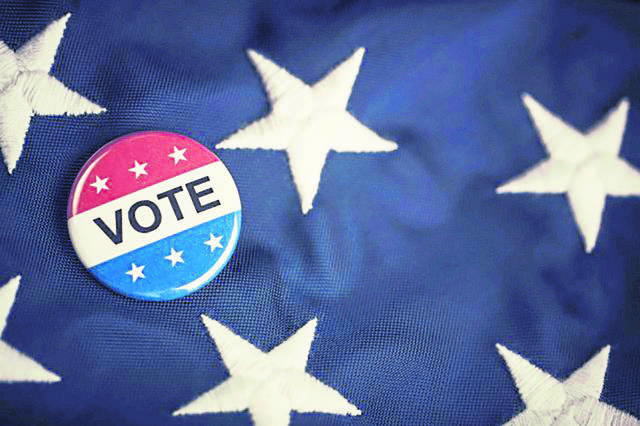https://mirror.triblive.com/news/pennsylvania/state-implements-omniballot-tool-for-blind-voters-in-november-election/
Pa. implements OmniBallot tool for blind voters in November election

Blind voters in Pennsylvania will be able to use a federally approved, cloud-based electronic platform to vote remotely in the November, and subsequent, elections.
The Pennsylvania Department of State will implement Democracy Live’s OmniBallot tool in response to a state court’s ruling that the previous paper ballot system used in the absentee and mail-in ballot process violated the Americans With Disabilities Act and Rehabilitation Act, according to a news release.
“This is an important victory and a major step toward providing equal access to the polls and fully accessible elections for all voters with disabilities,” said Kelly Darr, legal director for Disability Rights Pennsylvania. “The National Federation of the Blind and Disability Rights Pennsylvania will be monitoring the implementation of this new tool closely to ensure that disabled voters have the access and information necessary to use this tool in time for the general election.”
A lawsuit filed in May by Joseph Drenth and the National Federation of the Blind of Pennsylvania alleged the paper ballots used in the absentee and mail-in process did not allow blind voters to vote privately and independently in the same way other voters could because blind voters must rely on sighted third parties to assist with completing and returning a paper ballot.
Federation President Lynn Heitz said OmniBallot will give blind voters the freedom to vote completely by themselves. She and Drenth, the federation’s first vice president, are both legally blind.
“I think that it is a really huge step for people who are blind or connect with some kind of visual impairment in Pennsylvania: the idea that there is a way to get your ballot and mark it electronically at home, especially during this time of covid-19,” Heitz said.
It is unclear how many registered voters are blind in Pennsylvania, but Heitz said there are 150,000 people with some form of visual impairment living in the state.
The Department of State could not provide that information because that question is not asked on the voter registration form, a spokeswoman said.
“In fact, we don’t have data on any type of disability,” spokeswoman Wanda Murren said Thursday.
The new platform will allow county election officials to upload ballot information to create an accessible ballot, which can be electronically delivered and marked through OmniBallot by a link sent to eligible voters.
Darr said voters can mark their ballots electronically but will have to print them out and return them to the county.
“A lot of the details of how this will work and when have not yet been released by the Department of State, so there are a lot of details that blind voters are going to want to know and we just don’t have those details yet,” Darr said.
Murren could not provide details on the new system Thursday. “Things are still being developed,” she said in an email.
A court order approved in May required state officials to provide blind voters with an interim electronic option for mail-in voting in the June primary. For that election, the Department of State provided an accessible write-in ballot based on the federal write-in ballot that is available for overseas military voters, Darr said.
According to Darr, both parties agreed the interim option was not a long-term solution, but it was “better than a paper ballot.”
Heitz chose to vote in-person in the primary election. When she went to her local polling place, she found that the voting machine wasn’t accessible.
“It was a really good thing that I went because otherwise I would have found that out for the general election,” Heitz said. “Disability Rights Pennsylvania has actually filed a complaint regarding that, as well.”
Additional issues with the previous system included the potential to be exposed to covid-19 while at the polls, or not knowing if a mail-in ballot was tampered with, Heitz said.
“I don’t want to give the impression that people wouldn’t write on the ballot what somebody else asked them to write on the ballot, but there’s a lot to be said for being able to do this privately and independently,” Heitz said. “There’s always that chance.”
People could choose to simply not vote, but “We don’t want anybody to take this option,” Heitz said.
Earlier this month, state officials told the court the state had finalized a contract with Democracy Live and intended to implement OmniBallot in the November and subsequent elections. County boards of election were going to be instructed to send appropriate instructions for marking and returning ballots to approved OmniBallot voters, the release said.
“We were pleased the court granted our motion, recognizing that we were already planning to implement the accessible ballot marking device before the case was brought,” said Department of State Secretary Kathy Boockvar. “We are looking forward to implementing this solution next month and providing another layer of accessibility for Pennsylvania voters with disabilities.”
It will cost the state about $572,000 to use OmniBallot in the November election, Murren said.
Democracy Live’s website says the tool has been used in more than 15 states and in nearly 1,000 elections over the past decade.
The system generates a voter-verified paper ballot, and every voter has the option to print and mail their ballot.
“OmniBallot is an accessible, electronic ballot transmission system hosted in a secure, federally approved cloud,” the website says. “The OmniBallot balloting portal delivers ADA-compliant, electronic ballots to voters remotely, no matter where they are or what device they are using. The system offers elections administrators the option of one-way electronic ballot delivery and two-way ballot delivery and electronic return.”
OmniBallot launched in 2009, and its cloud has been approved for use by federal agencies such as the FBI, Department of Homeland Security and the Department of Defense, the website says.
Since its launch, the system has never been compromised, according to the website.
Copyright ©2025— Trib Total Media, LLC (TribLIVE.com)
